Have you ever wondered how arranging plants in bold color sections can completely change the look and feel of your garden?
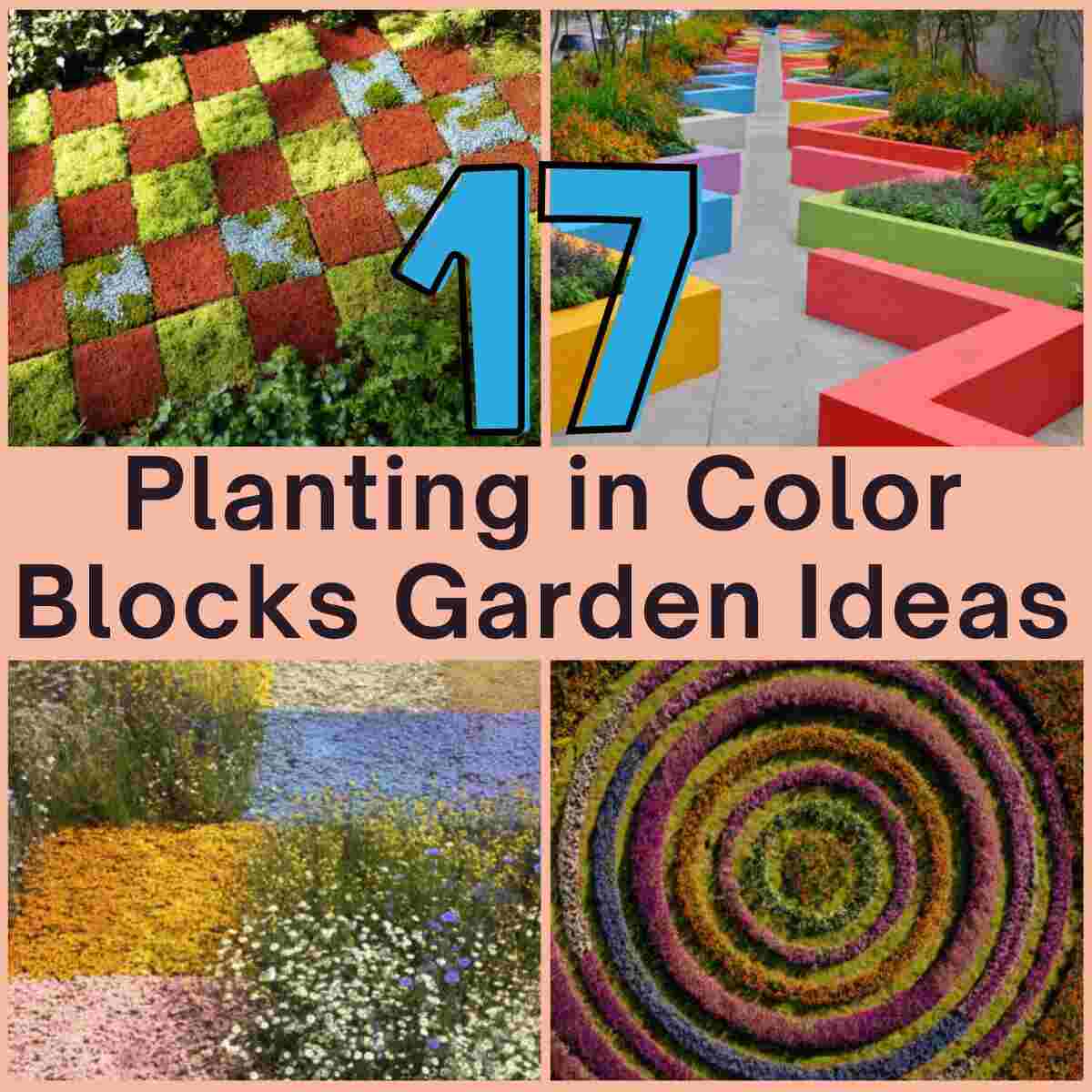
Planting in color blocks is a simple way to arrange plants in solid sections of the same color, making your garden look bright, neat, and easy to enjoy.
1. Monochrome Lavender Border
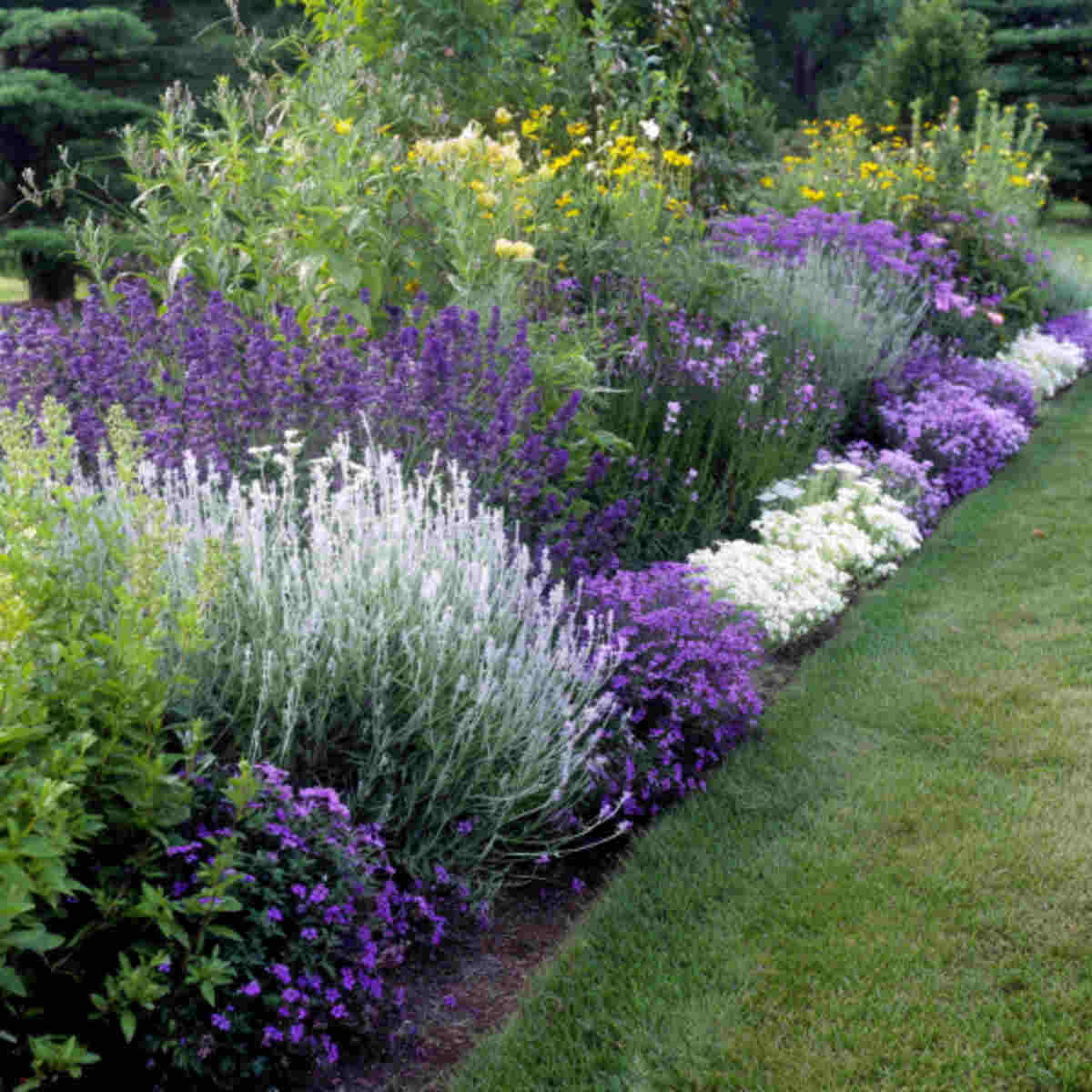
A monochrome lavender border brings calm and elegance to your garden.
By planting only lavender along a pathway or fence, you create a single-colored block that draws the eye and feels cohesive.
This technique is a great example of Planting in Color Blocks Garden Ideas because it uses repetition and uniformity to make a strong visual statement.
See, 15 Lavender Garden Ideas That’ll Make Your Yard Smell Like Heaven
2. Alternating Yellow and Purple Flower Rows

Rows of yellow and purple flowers provide a bold and vibrant contrast.
The complementary colors stand out beautifully, making the garden look organized yet lively.
In Planting in Color Blocks Garden Ideas, this approach is perfect for adding a playful and energetic feel to your space.
3. Gradient from Red to Orange Blooms
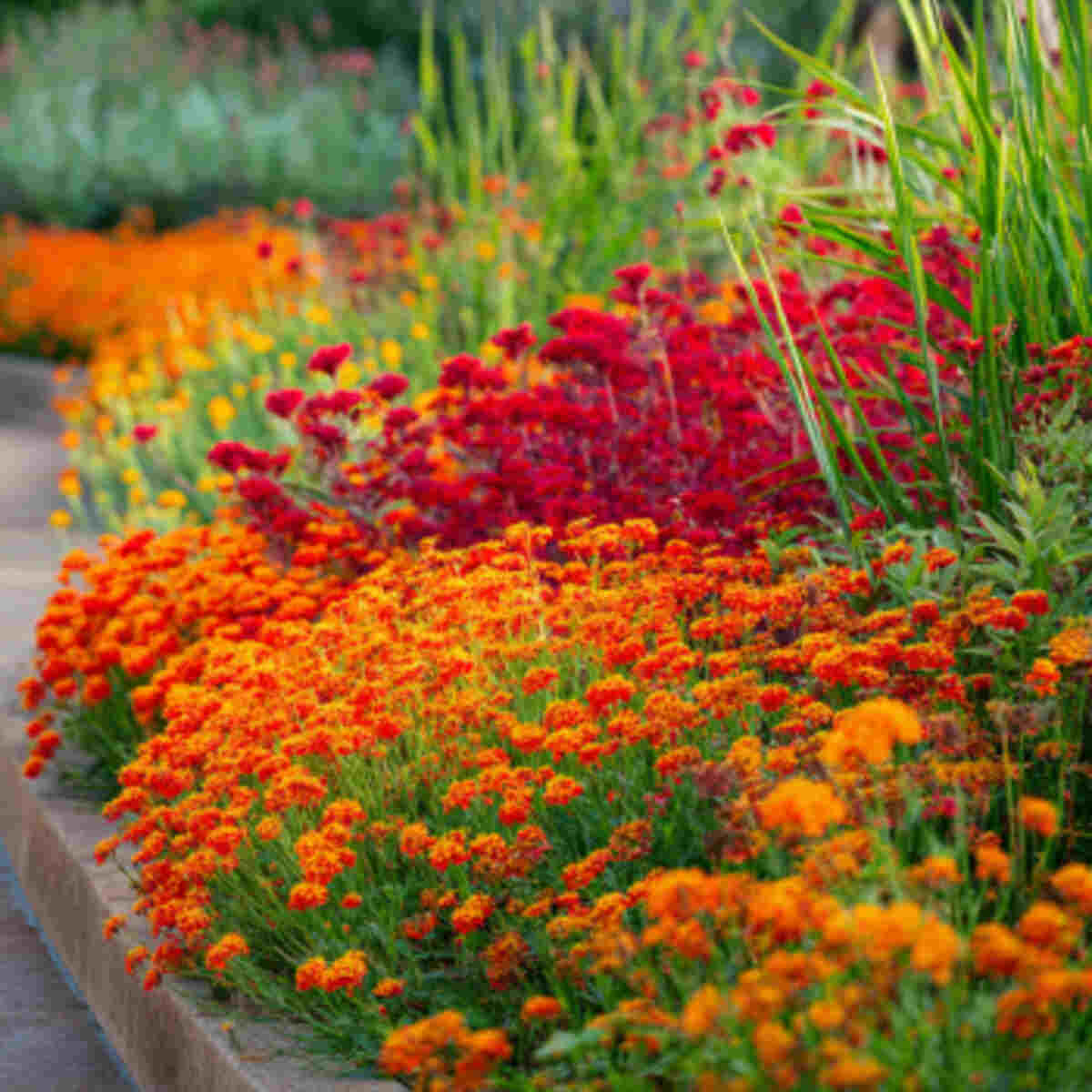
A gradient effect starting with deep red flowers and blending into bright orange creates a natural flow of warm tones.
This design captures attention and guides visitors’ eyes through the space.
It’s an excellent use of Planting in Color Blocks Garden Ideas because it turns the garden into a visual journey.
4. Checkerboard Pattern with Groundcovers
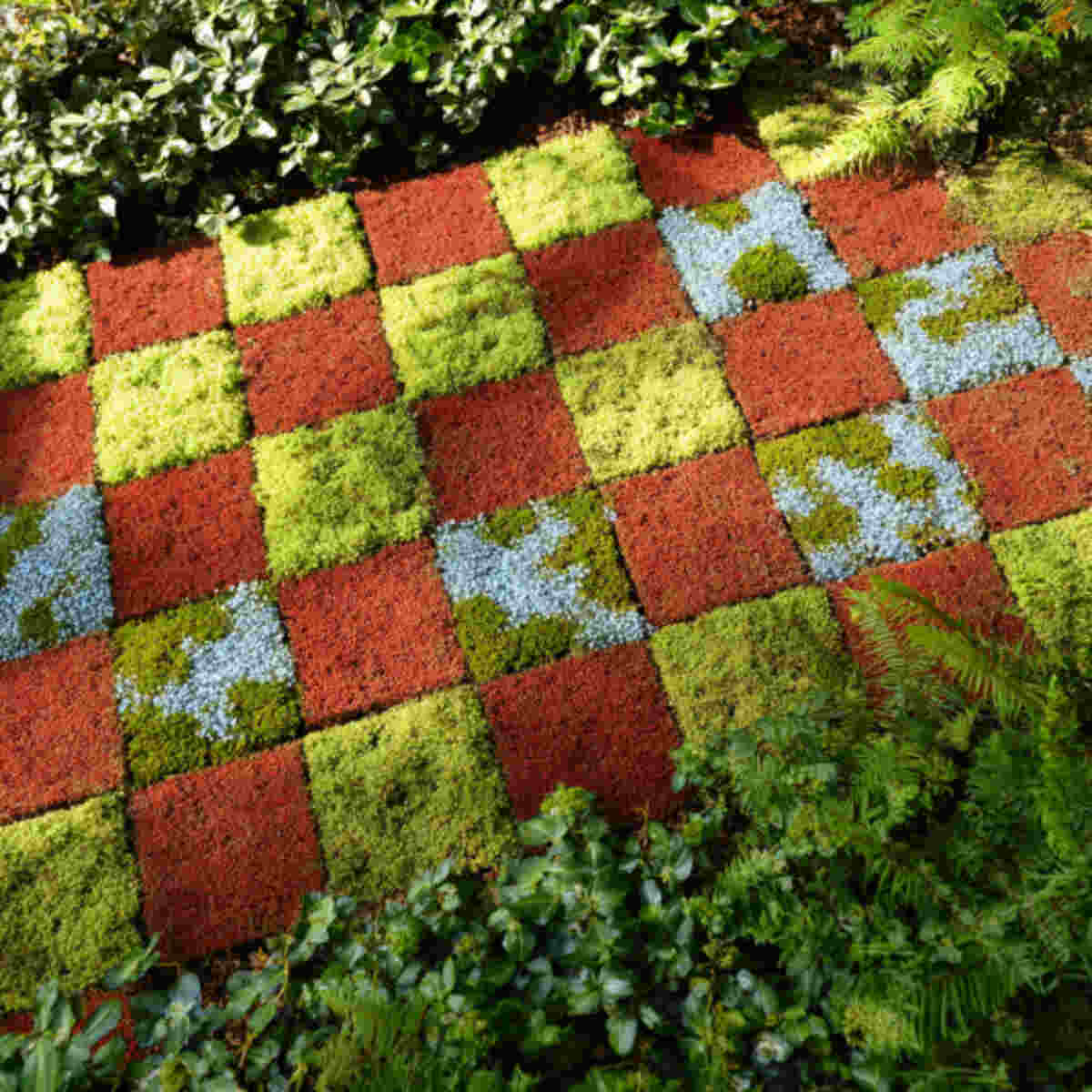
Using low-growing groundcovers in two contrasting colors to form a checkerboard pattern adds a modern twist to the garden.
The neat squares create structure while keeping the area lush and green.
This style showcases how Planting in Color Blocks Garden Ideas can bring both order and creativity.
See, 18 Backyard Cut Flower Garden Ideas That Make Growing Bouquets Easy
5. Stripes of White and Blue Flowers
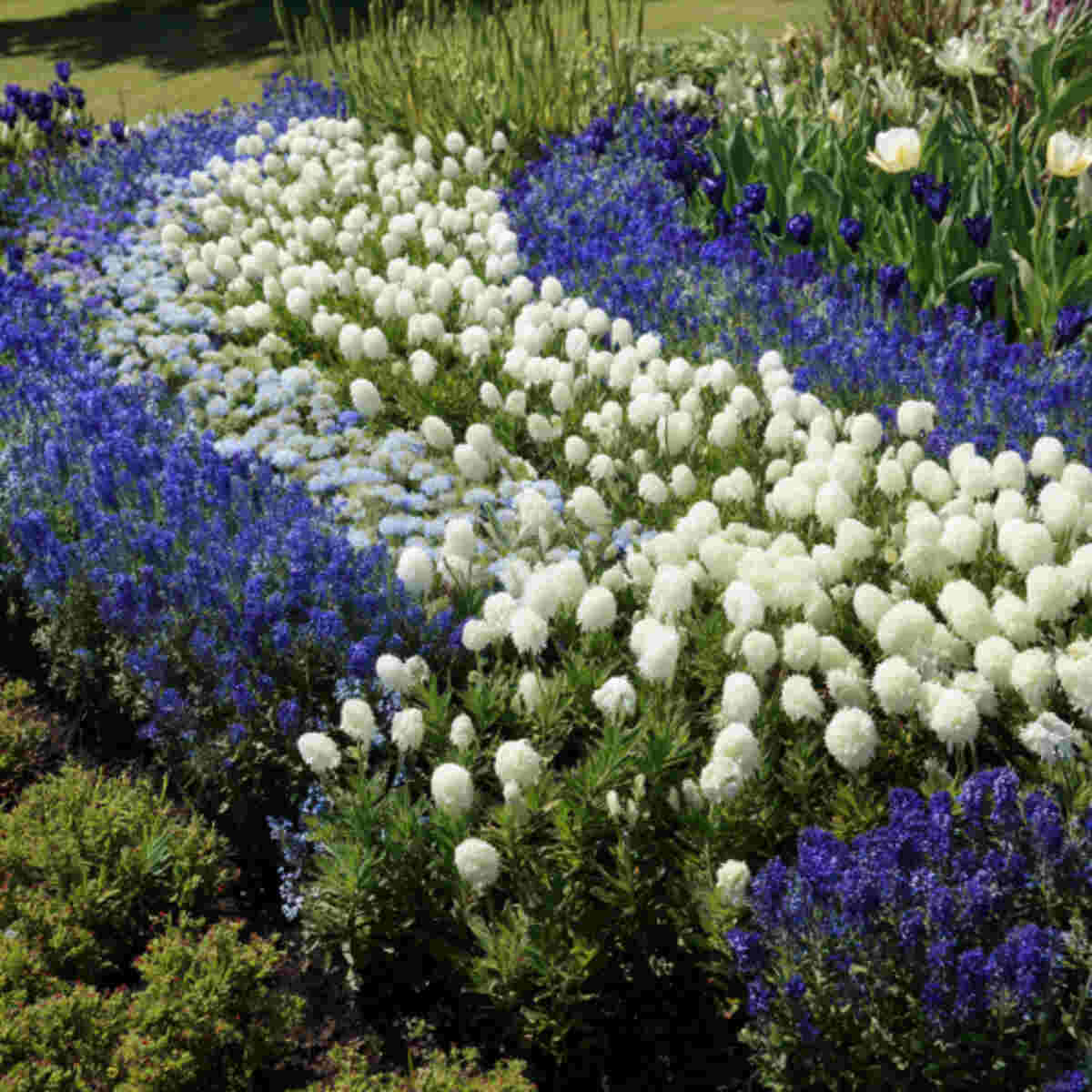
White and blue flowers planted in bold stripes create a refreshing, coastal-inspired theme.
The simplicity of two colors makes the design easy to maintain while still impressive.
In the context of Planting in Color Blocks Garden Ideas, stripes add movement and direction to your landscape.
6. Circular Beds with Single-Color Plants
Circular garden beds filled with one plant variety in a single color make a bold statement.
These beds act like natural focal points, especially when placed in open spaces.
This method reflects Planting in Color Blocks Garden Ideas by highlighting shape and color together for maximum impact.
7. Corner Triangles in Contrasting Hues
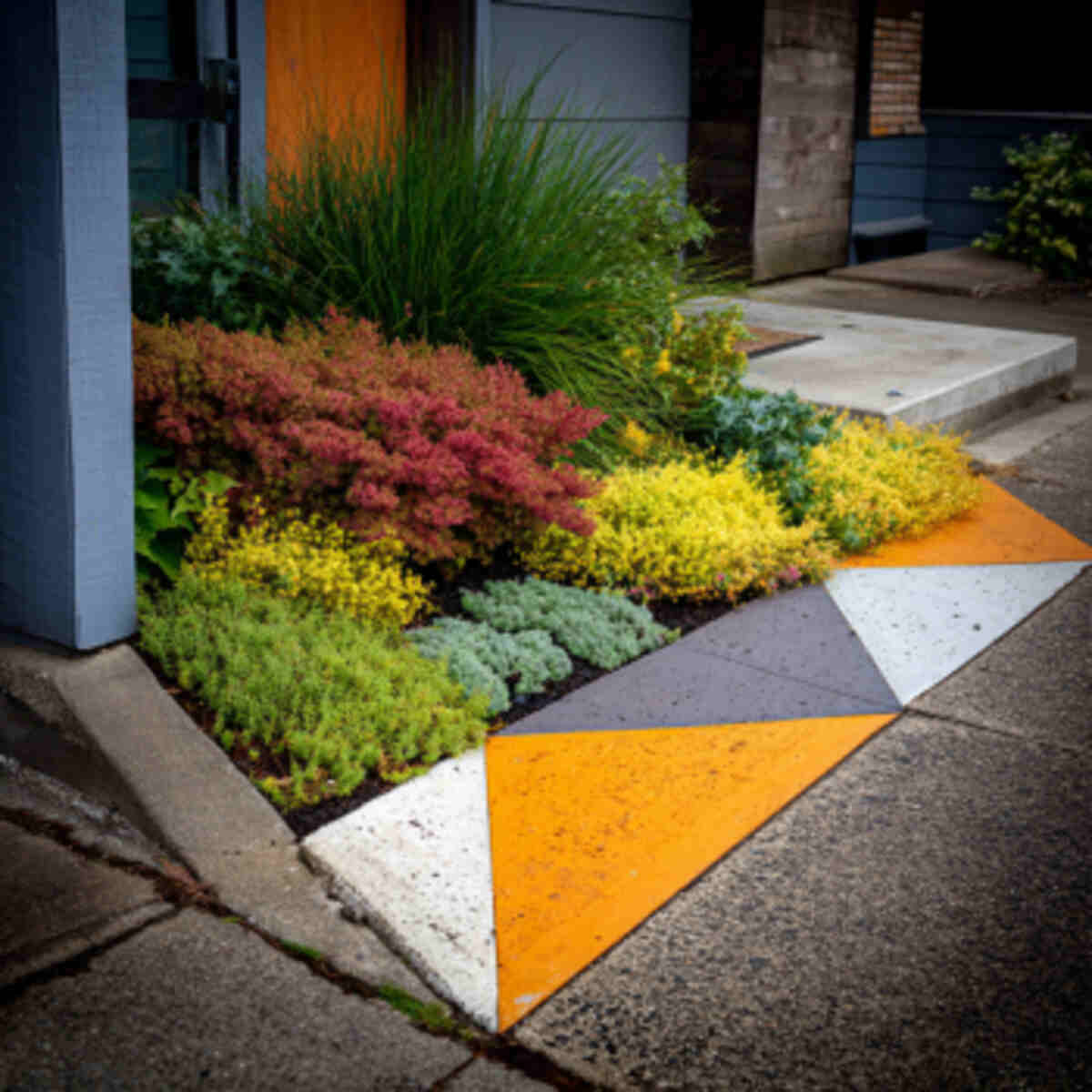
Planting triangular patches of bright, contrasting colors in the corners of your garden helps frame the space.
It draws the eye outward and gives a sense of symmetry.
As part of Planting in Color Blocks Garden Ideas, this design works well in small and large gardens alike.
8. Ombre Planting with Pink Shades
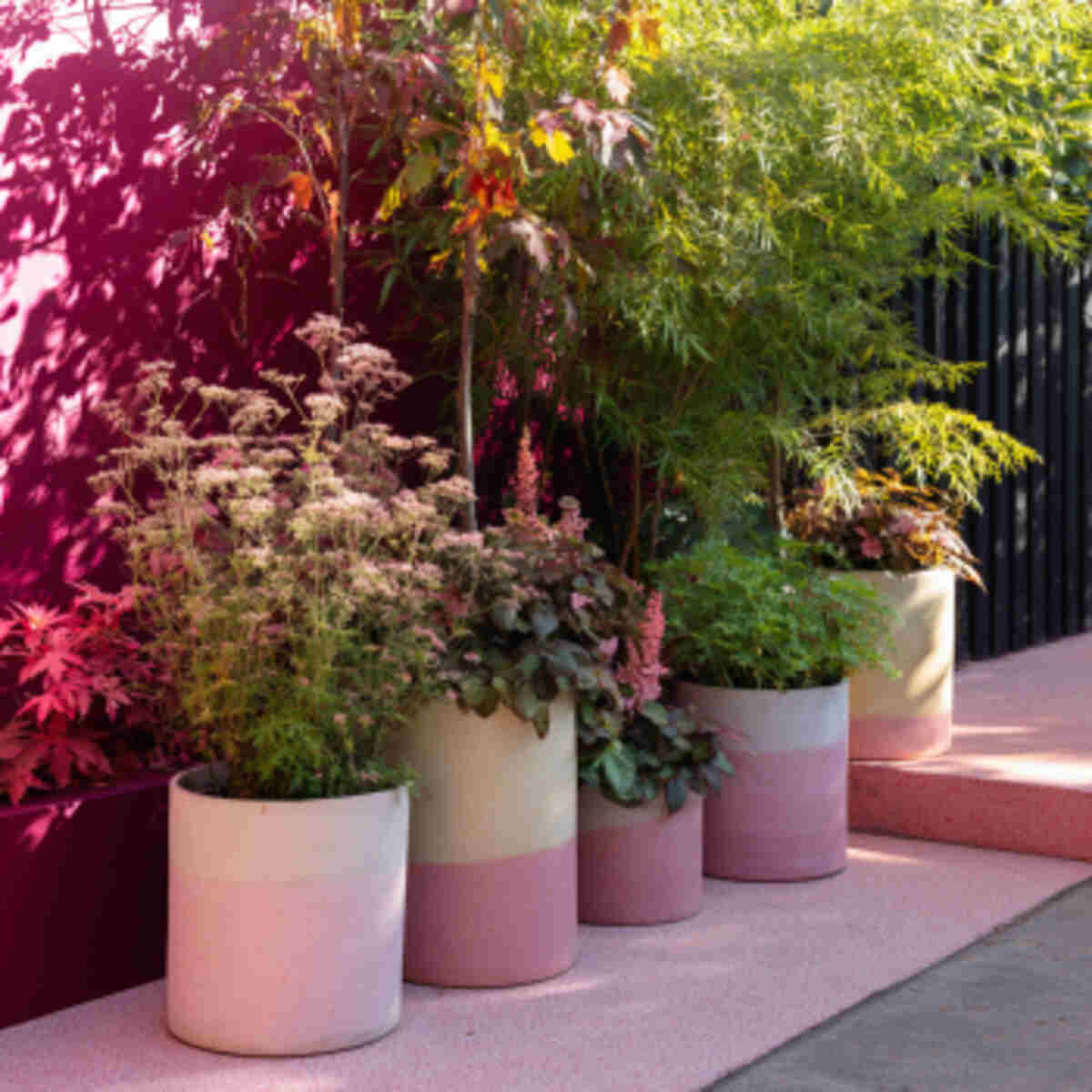
An ombre effect moving from pale pink to deep magenta adds elegance and softness.
It feels romantic while still offering a structured, layered look.
This is a refined way to apply Planting in Color Blocks Garden Ideas for those who enjoy gentle color transitions.
See also, 15 Easy DIY Colorful Planter Ideas That Anyone Can Try
9. Zigzag Rows of Bold Colors
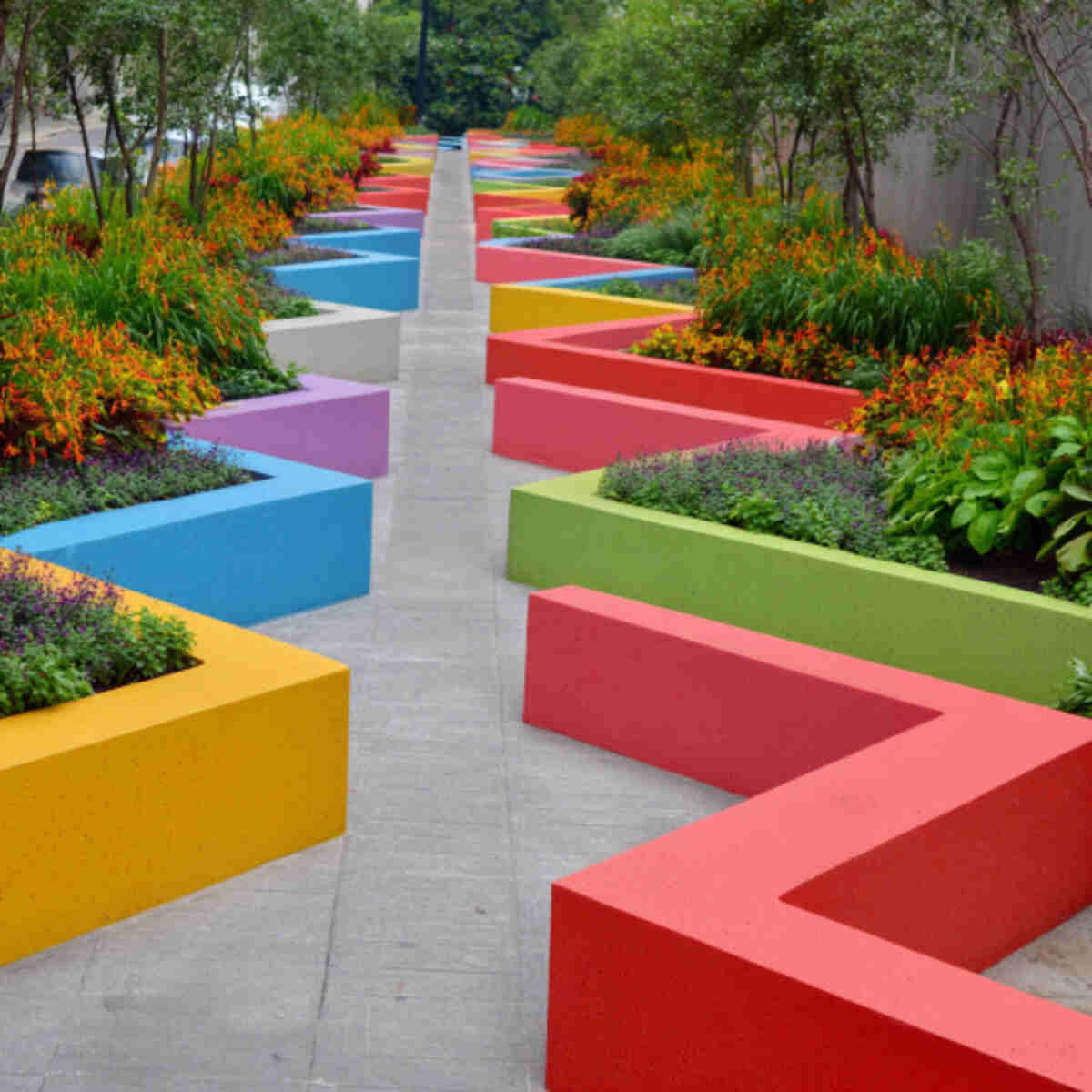
Creating zigzag rows with flowers in bold colors like red, yellow, or purple adds a sense of movement and energy.
It breaks the monotony of straight lines while keeping a clear pattern.
This style shows how Planting in Color Blocks Garden Ideas can be both playful and organized.
10. Concentric Rings of Different Flowers
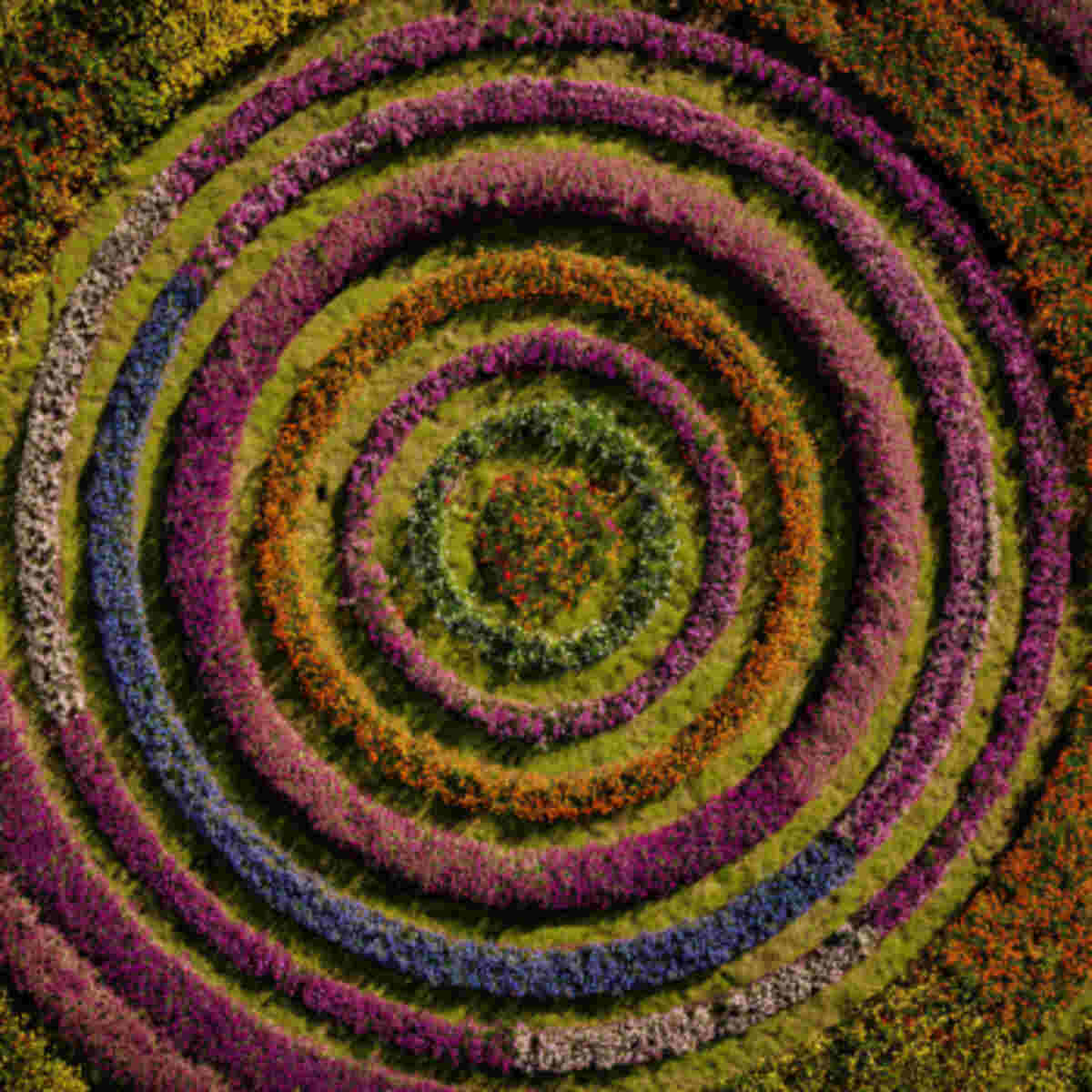
Planting in rings of different colors around a central feature creates a striking visual frame.
It works well around statues, fountains, or trees.
This is a perfect example of Planting in Color Blocks Garden Ideas that draws focus to a central point while adding layers of beauty.
11. Diagonal Bands of Mixed Foliage Colors
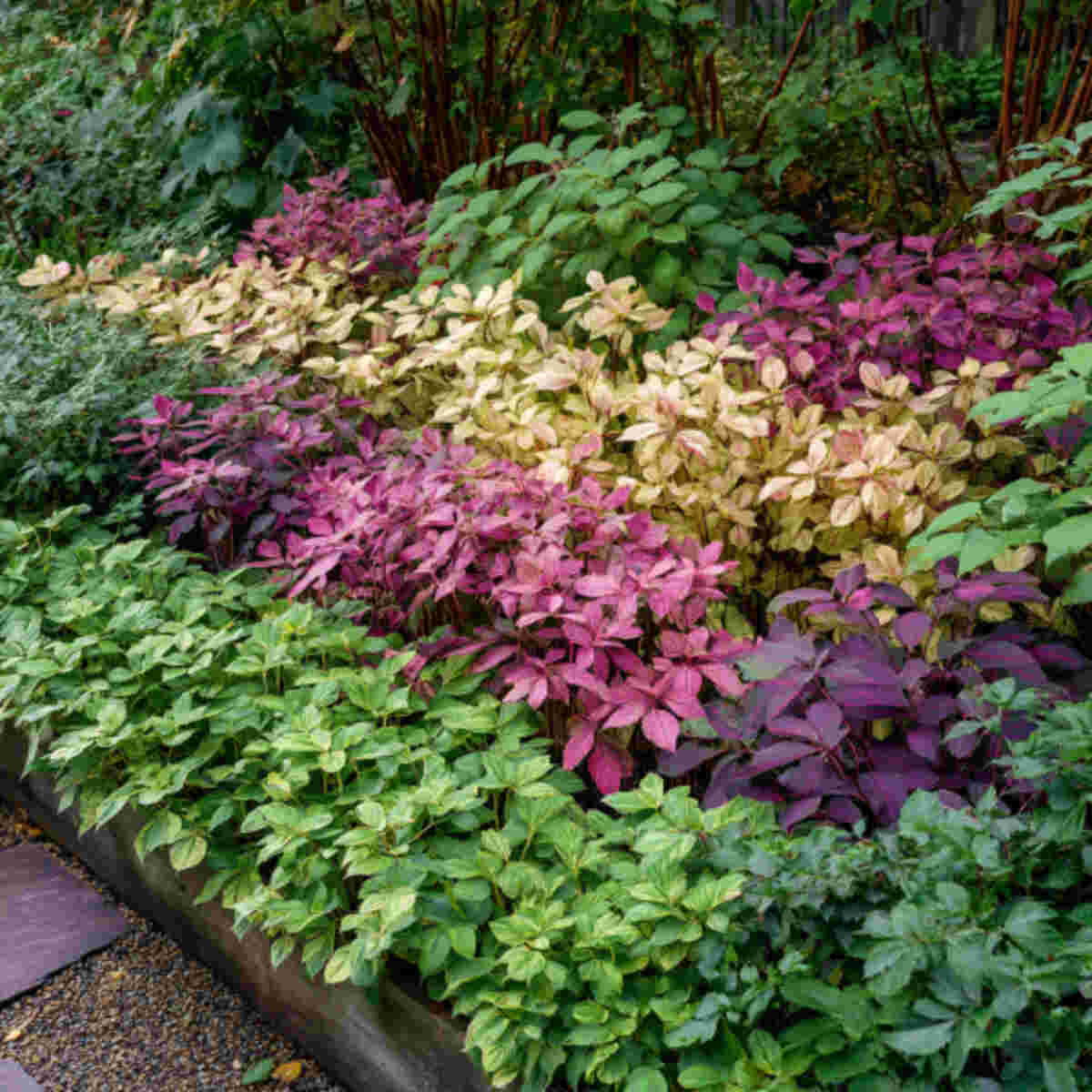
Using plants with different foliage colors in diagonal bands creates a strong geometric effect.
This design works especially well in sloped gardens.
It’s a creative approach to Planting in Color Blocks Garden Ideas that highlights texture and structure alongside color.
12. Seasonal Block Rotations for Changing Colors
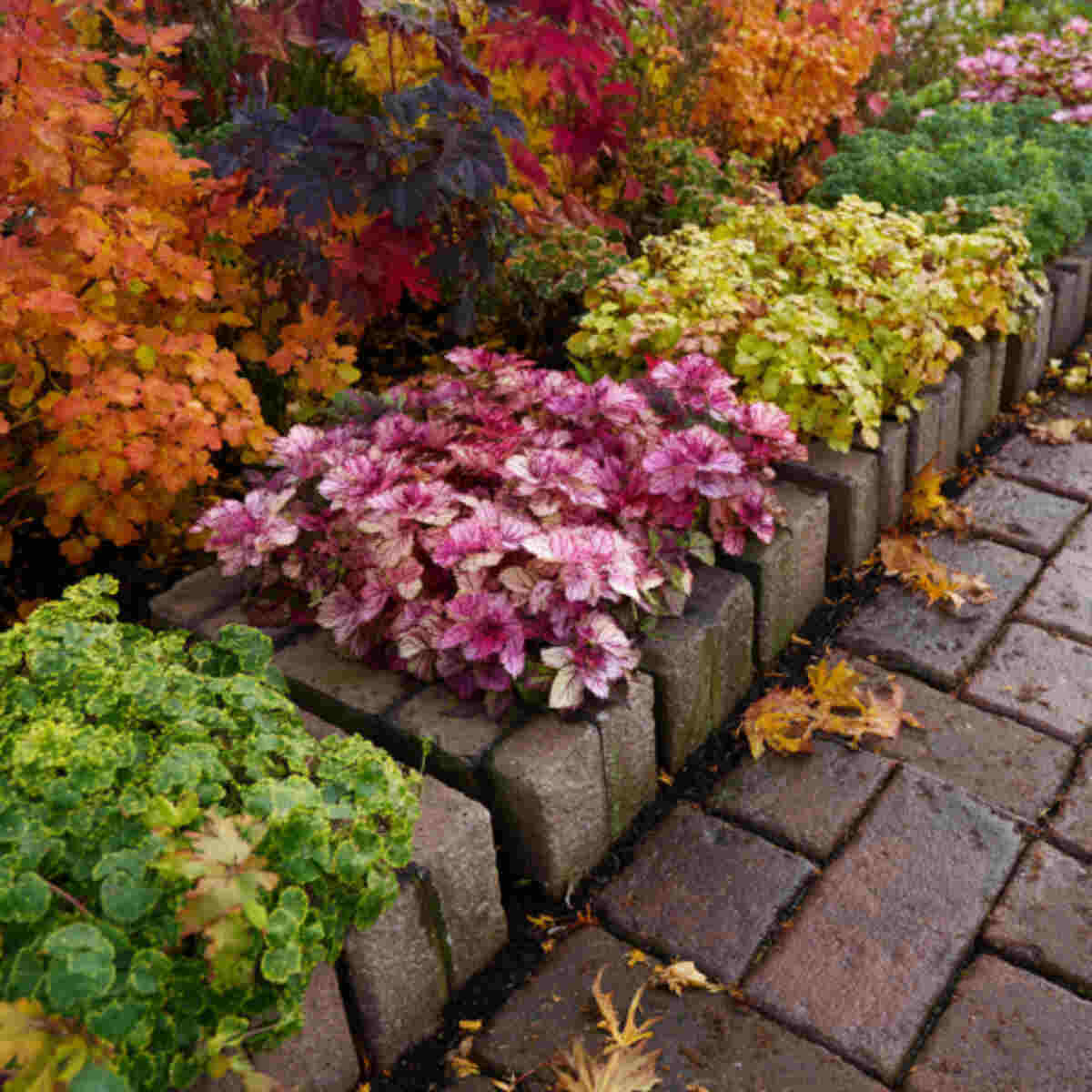
Rotating seasonal plants in color blocks ensures your garden stays vibrant all year.
You can switch from spring pastels to summer brights to autumn warm tones.
This approach keeps Planting in Color Blocks Garden Ideas fresh and engaging over time.
See, 20 Garden Ideas with Seasonal Color Transitions
13. Vertical Wall with Color Block Planting
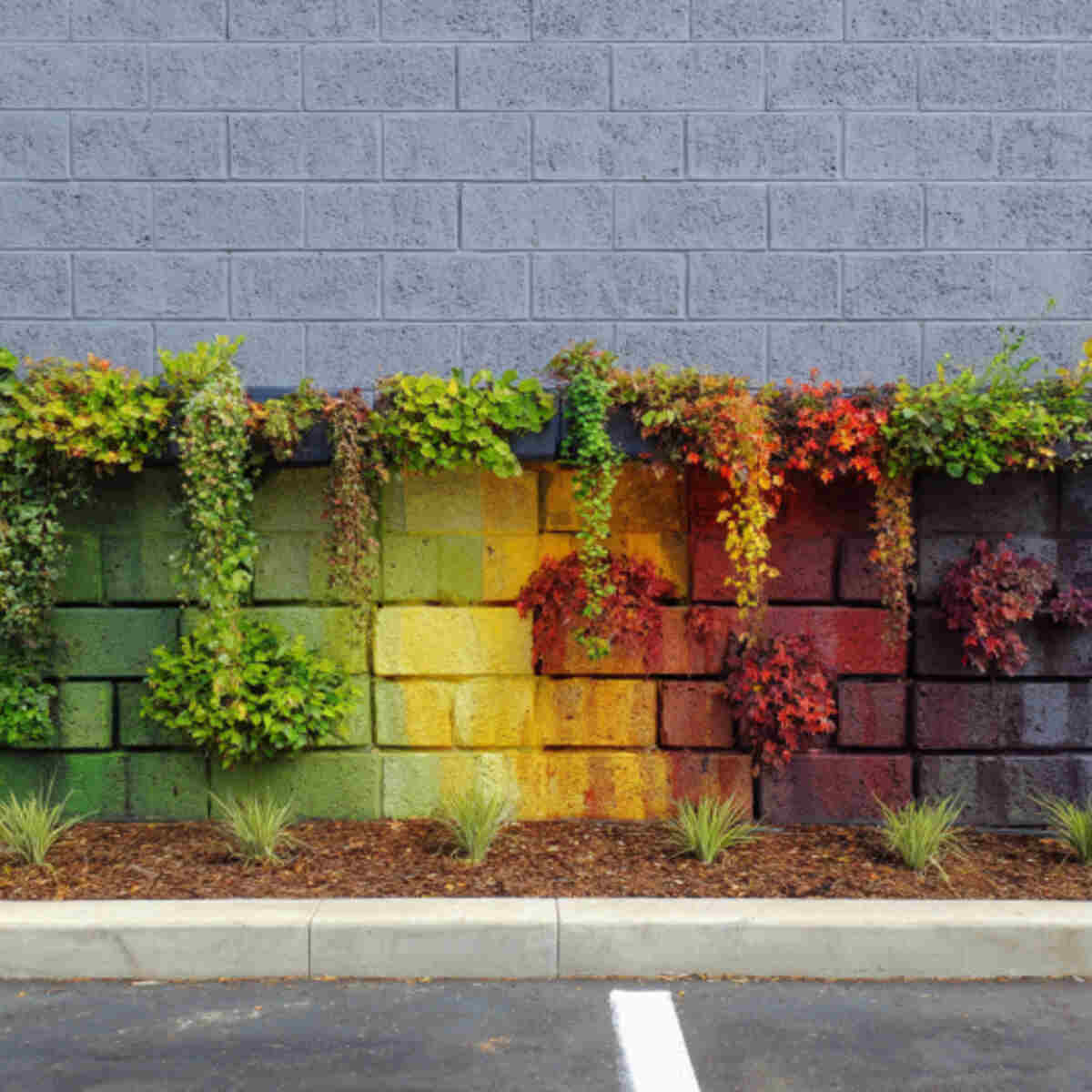
A vertical garden with sections dedicated to specific colors makes a living piece of art.
This method saves space while still offering the beauty of color-block planting.
It’s a modern take on Planting in Color Blocks Garden Ideas that works even in small yards or balconies.
14. Low-Growing Green and Red Foliage Contrast
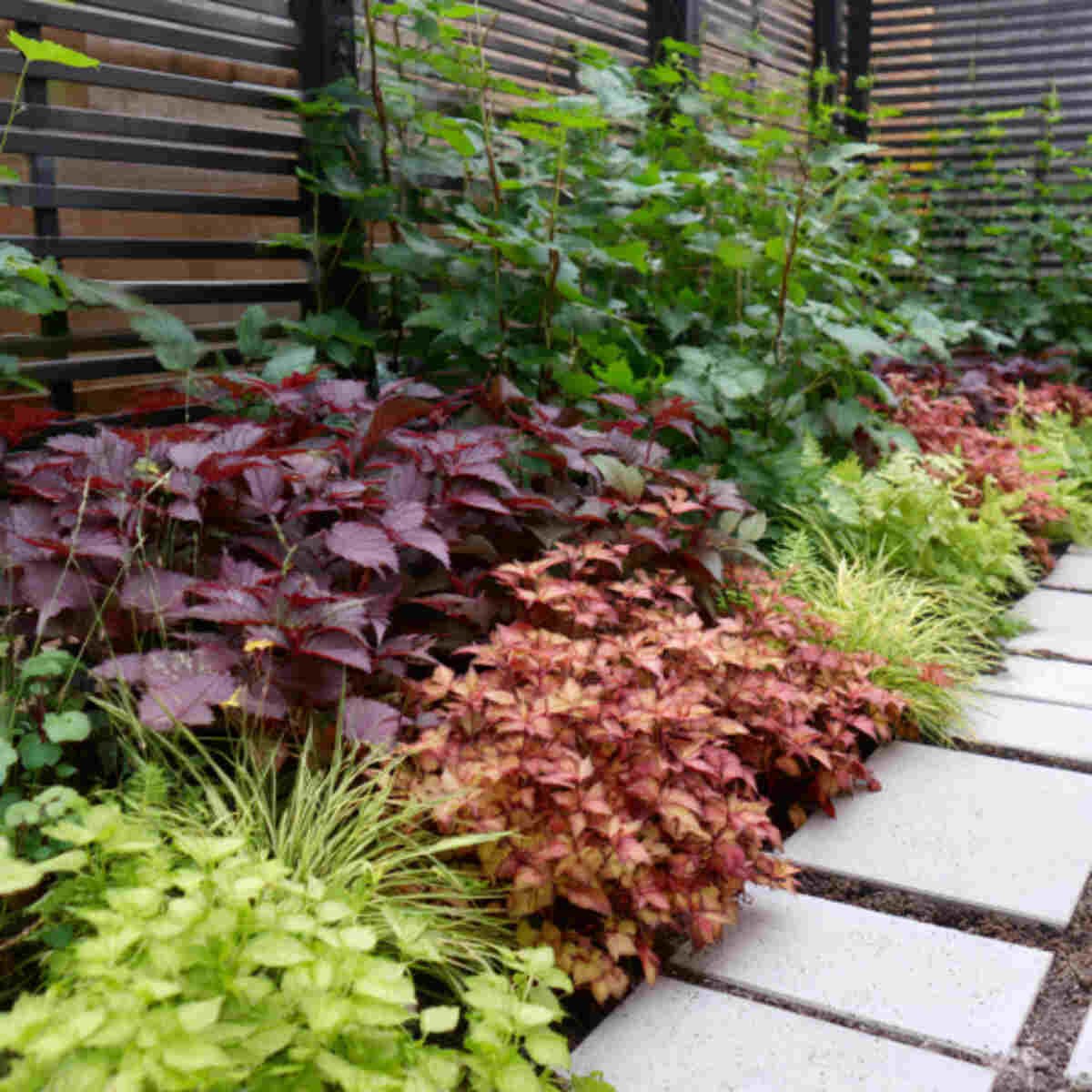
Pairing green and red foliage plants creates a bold and earthy contrast.
This combination works well for borders, walkways, or as a backdrop for flowering plants.
In Planting in Color Blocks Garden Ideas, foliage can be just as effective as flowers in defining blocks of color.
15. Square Patches of Wildflowers in Single Tones
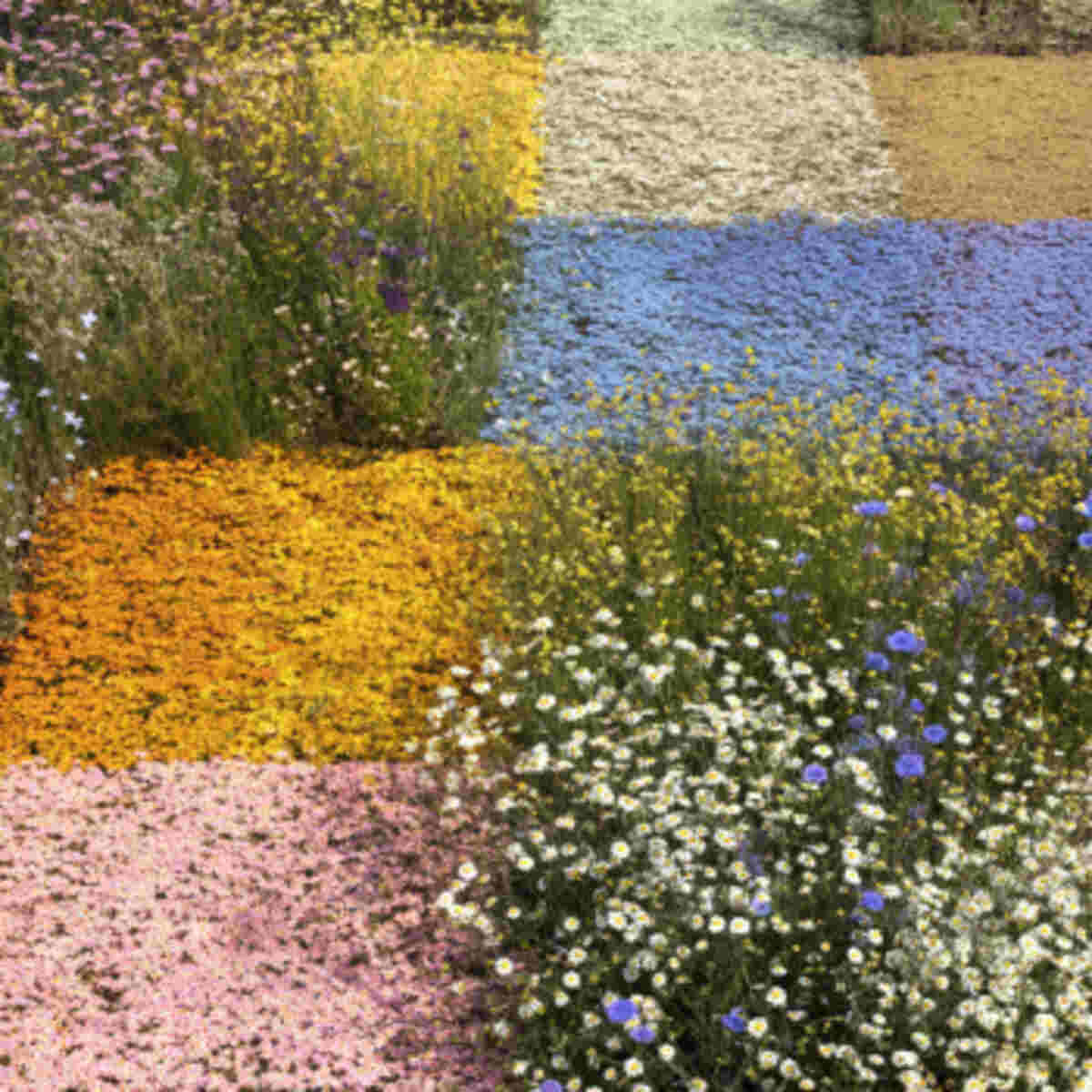
Planting wildflowers in single-color square patches gives a natural yet organized look.
The blocks still feel wild, but the uniform color keeps them visually connected.
This technique is a great example of how Planting in Color Blocks Garden Ideas can combine natural beauty with design.
16. Raised Beds Divided by Color Themes

Raised beds divided into sections, each with a different color theme, make the garden easy to manage and visually appealing.
This is perfect for experimenting with new color combinations.
In Planting in Color Blocks Garden Ideas, raised beds provide clear boundaries for color separation.
17. Pathway Edges Lined in Alternating Color Blocks
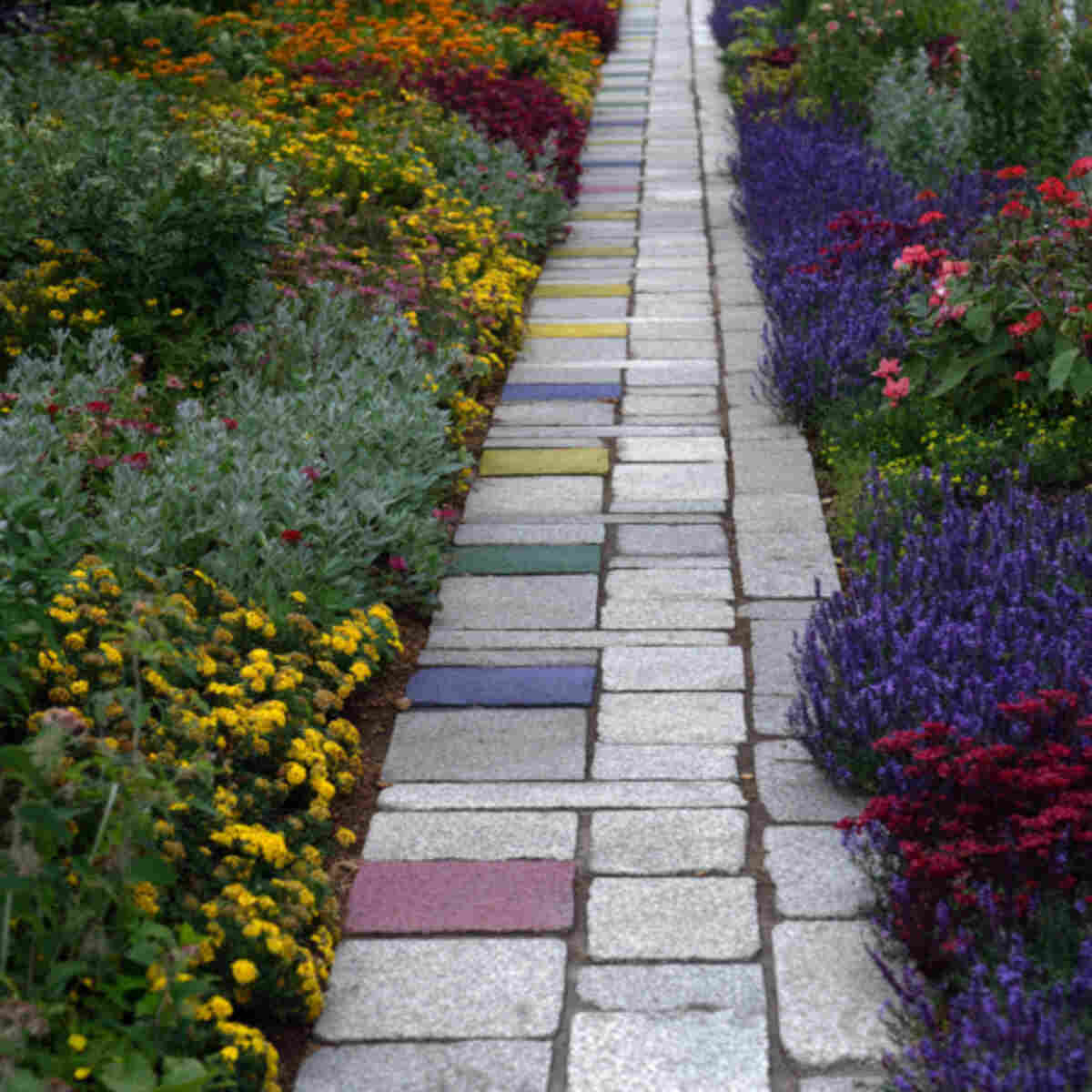
Lining pathways with alternating color blocks creates a welcoming entrance and clear direction.
It enhances the journey through your garden while adding a burst of color.
This is a classic way to incorporate Planting in Color Blocks Garden Ideas into functional spaces.
Planting in color blocks is a creative way to bring order, contrast, and beauty to any garden.
By grouping plants in solid color sections, you can highlight certain areas, guide the eye, and create moods that match the season or your personal style.
Whether you prefer soft pastels, bold contrasts, or changing themes through the year, this method makes it easy to design a space that feels organized yet full of life.
